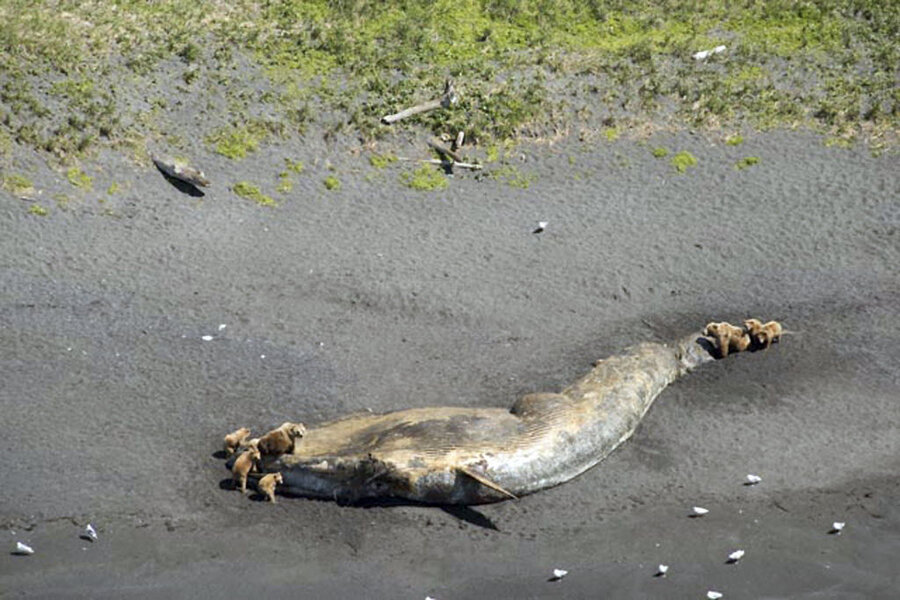What's killing whales off Alaska's shores?
Loading...
US marine biologists have launched an investigation into the mysterious deaths of 30 large whales in the western Gulf of Alaska.
It is still not clear what caused the mass death, but National Oceanic and Atmospheric Administration (NOAA) spokeswoman Julie Speegle said Friday that the incident may be linked to a toxic algae bloom in the Pacific Ocean, Reuters reported.
“Biotoxins will be one of the top priorities but not the only priority that we’ll be looking at to rule in or rule out whether it’s playing a role in this death investigation and these mortalities, both in Canada and the US,” Ms. Speegle said.
The bloom initially appeared in May, the same month that the first of the dead whales was spotted.
But Speegle says that infectious diseases are also possible culprits in the death of whales, as are other environmental factors.
The 30 dead whales washed ashore along a span of coastline stretching more than 1,000 miles from south of Anchorage to the Aleutian Islands. The strandings tally amounts to almost three times the historical average for such whale deaths in the region, NOAA said.
According to NOAA, officials said at a teleconference on Thursday that the whale deaths may be tied to a larger marine pattern.
The formal investigation is expected to begin as early as September, and could take months, even years, of data collection and analysis, Speegle said Friday.
One difficulty is to reach the dead whales to get samples, as Alaska’s coastline is vast, largely uninhabited and jagged in many places, according to Bree Witteveen, a Kodiak-based marine mammal specialist with the Alaska Sea Grant program.
“It’s unfortunate, but we just cannot get to those carcasses more often than not,” she said.
Researchers are examining some of the dead whales while, according to NOAA, some are also working on samples of harvested seafood, forage fish and the waters where the dead whales swam.
“It’s going to take a bit of time to pull it all together,” said Teri Rowles, lead marine mammal scientist for NOAA Fisheries. “And each of these individual species that are examined are really important to us as we put the whole ecosystem picture together.”
This report includes material from Reuters and The Associated Press.






